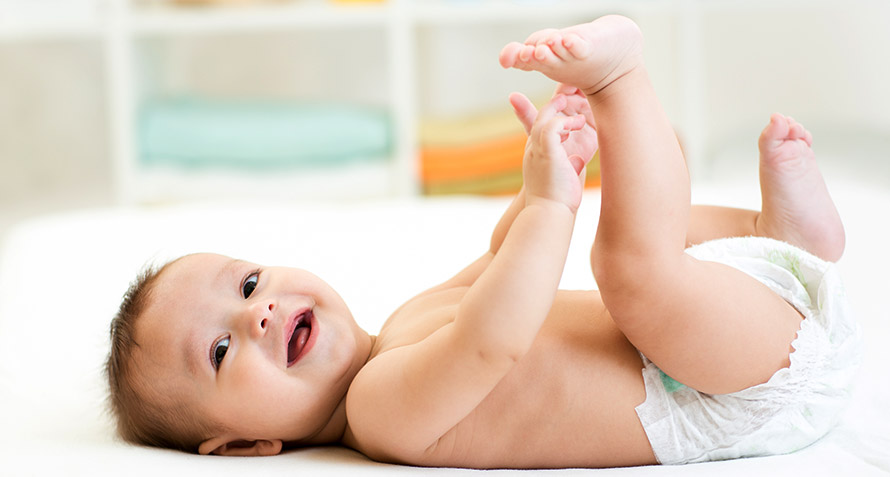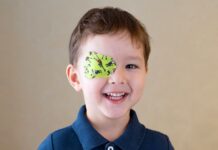Looking at your baby stand or take his/her first steps can be an exciting feeling. But some of you might notice that your baby’s legs seem to look different or weird when they stand or walk. The position of your baby’s legs might vary, wherein your child might stand with his toes forward and his ankles together and his knees don’t touch, this means he’s bowlegged. And if his knees touch but his ankles don’t, he’s knock-kneed.
Read More:Pyloric Stenosis in Babies : Causes, Symptoms, Treatment and Prevention
In This Articles:
What are Bowed Legs?
Is Bowlegs Common in Babies?
How to know if your Child is Bowlegged?
Causes of Bowed Legs
How long does Bowed Legs last?
When Should you Worry?
Diagnosis of Bowed Legs in Infants
Treatments of Bowed Legs in Infants
Parenting tips for Children with Bowed Legs
All You Need to Know about Bowed Legs in Babies
What are Bowed Legs?
Bowed legs also known as genu varum or bowlegs, is a common condition occurring in infants and toddlers. When a child with bowed legs stands with his or her feet together, there is a distinct space between the lower legs and knees; this may be a result of either one, or both of the legs curving outward. Walking often exaggerates this bowed appearance. In most of the cases, bowed legs naturally begin to straighten as the child grows. If bowed legs have not resolved by the age of 3 years, then it might mean that there is an underlying cause, such as Blount’s disease or rickets.
Read More:Tongue Tie in Infants: Symptoms, Causes and Treatment
Is Bowlegs Common in Babies?
Bowing of legs is a common condition in most of the children. Since children do not know how to stand or walk their muscles and bones take time to get into a proper shape and appearance. Through time your baby will learn to walk and their legs will get into a normal appearance.
How to know if your Child is Bowlegged?
Usually you can recognize bowed legs from the normal legs in children. If their legs appear curved when they stand upright; their feet and ankles will meet, but the knees will not, then you can say they’re bowlegged. When their legs do not begin to straighten out when they become a toddler, it is abnormal and you need to take them to a physician. You can usually recognize bowlegs by the upright standing position of your child, but if you still want a confirmation then look for these signs. Besides visual indicators, these are the other symptoms of bowlegs:
- Inappropriate walking pattern (i.e. not direct or forward)
- Lack of coordination in the movement
- Feet turning in (also known as “in-toeing”)
- Discomfort or mild pain in ankles, knees, hips (this is usually seen in adolescents and not in children)
Read More:Contact Dermatitis in Babies: Symptoms, Causes and Treatment
Causes of Bowed Legs
Bowed legs are caused due to a fetus’ loose muscle (laxity) and the position they occupied in the uterus, which is eventually outgrown. Other causes of bowed legs are:
Physiologic Genu Varum
In most cases, for children under the age of 2 years, bowing of legs is a normal variation in leg appearance and doctors refer to this type of bowing as physiologic genu varum. In children with physiologic genu varum, the bowing begins to slowly improve at approximately 18 months of age and continues as the child grows. By ages 3 to 4, the bowing is corrected and the legs get to a normal shape.
Blount’s Disease
This is a condition that can occur both in toddlers and adolescents. An abnormality of the growth plate in the upper part of the shinbone (tibia) causes for this disease. Growth plates are located at the end of a child’s long bones which help determine the length and shape of the adult bone. This disease can be distinguished only after your child reaches age 3 or above.
Rickets
Rickets is a bone disease that causes the bones to become soft and bend other bone deformities in children with vitamin D deficiency. It can also be caused by a genetic abnormality that does not allow Vitamin D to be absorbed correctly. This form of rickets may be inherited.
Read More:Chalazion in Children: Causes, Symptoms, Treatment and Prevention
Bone Dysplasia
Bone dysplasia is a rare hereditary condition wherein the abnormal growth of joints and bones results in abnormal shape and size of the skeleton and disproportion of the long bones, spine, and head
Vitamin D Deficiency
Vitamin D deficiency in children can lead to a loss of bone density and also cause Rickets disease.
Bowing Fractures
This happens only in children as a result of injury, and is where the bone bends but does not break. This frequently results in symptoms such as swelling or pain in the knee area, ankles and hips.
Lead or Fluoride Poisoning
This is a very rare process where lead or fluoride in the body poisons the tissue of the bone. This creates more un-mineralized material in the bone and allowing them to weaken over time, which in turn leads to bowing.
How long does Bowed Legs last?
Bowed legs may last from zero to 24 months after your baby starts walking. Initially, your baby might have bowed legs but gradually they will get a normal appearance. Bowed legs will disappear at the time your baby reaches age 3. If you think that your child has bowlegs along with other symptoms and if it doesn’t seem to disappear after age 3-4 then consulting a doctor is recommended.
When Should you Worry?
If your child’s legs have not straightened by the 3rd or 4th birthday then it can be a matter of concern. Consulting a doctor at this stage is recommended. If your child is still bowlegged then the following can be the issues of concern:
- Difficulties in walking
- Problems with advanced movement, like running
- Challenges standing upright
- Other muscle and bone-related problems
- Potential medical complications
Diagnosis of Bowed Legs in Infants
The doctor will first examine the medical history of the child, and then the severity of the bowed legs will be seen. In most cases the child will not have severely bowed legs. After this the diagnosing process may include the following steps –
- Physical Examination – The doctor will physically examine the child to observe the curve of their bow and determine how severe the case might be.
- Blood Test – Performed to determine instances of vitamin D deficiency.
- X-rays – Used to rule out Blount’s disease.
- Other Tests – The doctor will also check out the possibilities of other diseases affecting the legs, such as rickets, during this time.
Treatments of Bowed Legs in Infants
Non-Surgical Options For Treatment Include
A check up every six months by the doctor until the problem is resolved on its own. Refer to a specialist to help manage symptoms of Blount’s disease or Rickets.
Surgical Options for Treatment Include
- Guided Growth Surgery – surgery is done on the growth plate of the healthy shinbone. This surgery of the growth plate stops the growth on the healthy side of the shinbone which gives the abnormal side a chance to catch up, straightening the leg with the child’s natural growth.
- Tibial Osteotomy – In this case, surgery is done on the shinbone via a cut just below the knee, and the shinbone is then reshaped to help correct its alignment. The bone is held in place while it heals with either an internal plate and screws, or an external frame that is positioned on the outside of the leg
Parenting tips for Children with Bowed Legs
- Have enough knowledge to understand what is happening to your child.
- Know when, where, and how to provide support.
- Make sure you choose the right and comfortable shoe for your baby.
- Feed your baby nutritious food, mainly, make sure they are getting enough of vitamin D.
- Keep checking for the symptoms.
- Make sure your child is in a positive environment.
- Faster you recognize the symptoms the better. As soon as you notice your child being uncomfortable, take them to a physician.
- Allow your children to do yoga from their childhood. This will enhance their overall health condition.
- Your child’s weight can also affect bowed legs. Make sure to keep them balanced.
- Get regular checkups by the physician.
References
https://orthoinfo.aaos.org/en/diseases–conditions/bowed-legs-blounts-disease













